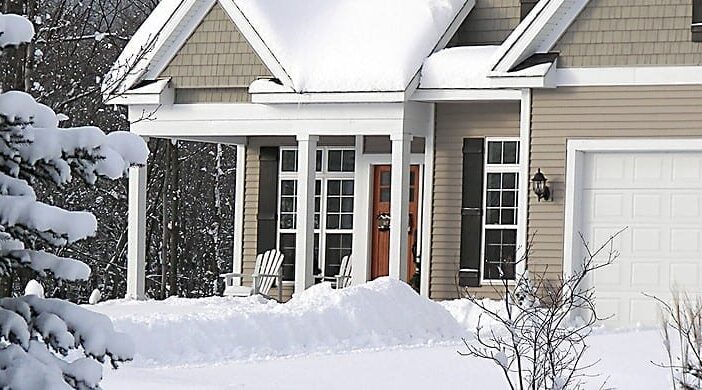
As the cost of living continues to rise, so do homeowners concerns about heating their homes throughout the coldest months of the year. Fortunately, when paired with regular heating system maintenance, homeowners have a variety of affordable ways they can keep their home warm and comfortable all winter long. This article will explain all of the ways to heat your home this winter and save money.
Nobody wants to spend thousands of dollars just to stay warm during the winter. However, it is not a good idea to stay in a cold house during the winter. The cold can drastically affect the health of infants and the elderly, alike. Money and health are good reasons to keep your house warm during the winter. The cold can freeze your pipes and cause them to not work properly, resulting in damage that will cost more money to repair further down the road.
This article will help you stay warm indoors and save money at the same time. You won’t have to run your heating system all day and night to keep the family warm. These little tricks are simple and effective. When done correctly, you can save hundreds on your heating bills and enjoy living in a warm, comfortable house during the harshest of winter. In addition, you will stand a chance of keeping your family healthy and lowering your chances of needing repairs done to damage due to frozen pipes and appliances.
These ten tricks will explain all of the ways to heat your home this winter and save money
1.Thick Curtains
Curtains with thermal linings (or thick curtains in general) will help insulate the window area. Make sure to open the curtains and let as much sun through the windows as possible during the day. If you have really long curtains, hang them over the curtain rod to allow light into the room if they are a darker color.
2. Double Glazing or Insulated Glazing
If this method is too expensive, homeowners can try using a special film that imitates the effect of double-glazing. As a bonus to a warmer home during the winter, homeowners can also have a quieter home. This is really good if you live near an Air Force base or an airport. How is this possible? The gap between the panes dramatically reduces transmission of both heat and sound.
3. Close Up Chimneys
If a homeowner has an unused chimney for decor, they need to ensure it is completely closed up. Chimney balloons are great ways to do this. Heat can escape through the chimney when they are not being used, causing your HVAC system to work harder and raise heating costs. Think of the chimney as a vacuum. Because warm air is lighter, it is more likely to be sucked up through the chimney, thus leading to higher heating costs and the escape of warm air.
4. Prevent Mini-Draughts
It may not seem like much, but mini-draughts that sneak through letterboxes, key holes, doggie doors, and the edges of doors can be quite costly and make a home a lot colder. Keyhole covers, doggie door insulators, and DIY draught excluders can help stop heat from escaping. Like the chimney, these aforementioned openings serve as a mini-vacuum releasing hot air. Make sure that the small cracks are properly covered.
5. Clear Radiators and Baseboard Heaters
At least during the colder months, avoid putting large pieces of furniture in front of your radiators and baseboard heaters, as the furniture absorbs the heat. Radiators and baseboard heaters use cold air drawn into the heater and releases warm air. The cycle repeats, keeping the room warm. Large pieces of furniture break this cycle. Keep all large pieces at least six inches away from the heaters.
6. Add Shelving
If you have high ceilings, try placing shelves above the radiator and baseboard heater as the shelves assist in channeling the warm air. The shelving trick also works when placed above a radiator/baseboard heater that resides below a window with curtains, as the warm air becomes trapped between the window and curtain. This way, you bend the cycle of warm air flowing through the room.
7. Close Unused Rooms
Why heat a room that you don’t use? Close the doors when they aren’t in use. Heat is be diverted into the room, taking it away from the more important rooms that used daily such as the living room or kitchen. Do not open them unless you really need something from inside.
8. Cover Bare Floors
If floors are not properly insulated, they can account for as much as 10% of heat loss. Carpets and rugs help guard against this loss. Cracks in the floor are to blame for draining the heat. Purchase rugs and carpeting for your floors from home decor stores and place them over the cracks when applicable.
9. Insulate
Make sure that your entire house is insulated. Walls, ceilings, attics, and basements- it all makes a huge difference. Insulation acts as a nice cotton-like wall that blocks cold air and keeps in the heat.
10. Heating System Maintenance
As always, the most important thing to do to ensure your home stays warm all season long is to schedule annual heating system maintenance with your local heating company. It is wise to keep your heating system at a certain number most of the time. Only turn it up when you really need it.
Call Jones Services today for more information on ways to heat your home this winter and save money!


